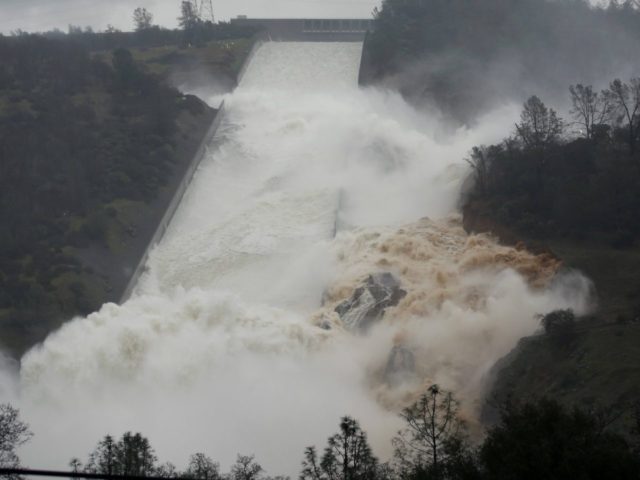With water rising at 15,000 feet per second behind Oroville Dam and two weeks of heavy rain, winds and snow about to be unleashed, a respected geologist is warning that the crumbling of Oroville Dam’s spillway is due to the use of structurally flawed rock.
As distinguished Professor Emeritus at UC Davis and California’s preeminent expert regarding tectonic movements and Alpine-type mountain belts, Eldridge M. Moores recently told KQED that the main reason Oroville Dam’s spillway failed and almost took down the dam itself, is due to the rock used 60-years ago to anchor the spillway, was deteriorating incompetent rock, rather than fresh rock granite that could last 1,000 years.
Competence is a term used by geologists to describe the mechanical strength of differing types of rocks to withstand erosion and deformation. Competent (fresh) rocks tend to commonly be seen as exposed outcrops of high mountain cliffs. Hitting a hammer on volcanic competent rock, causes the hammer to bounce back.
Incompetent (old) rock has suffered from air exposure causing chemical transformation and decomposing effect over time. That is why old rock tends to commonly be seen in lowland buckled and fractured formations. Hitting a hammer on volcanic incompetent rock causes a crumbling effect.
Although the builders supposedly dug down about 20 feet to get to fresh granite as the rock base for the earthen Oroville Dam, Moores as the former President of the Geological Society of America told KQED that he believes the dam’s spillways were built with the type of incompetent rock that would have been lying around after the foundation was dug.
Breitbart News reported that the California Department of Water Resources declared a “very significant risk” if repairs to the damaged Oroville Dam spillways were not completed and the spillway fully-operational for the next rainy season that begins on November 1.
Although the media have lost interest in Oroville Dam, runoff from a heavy rain storm this weekend is currently flowing water into the reservoir at the rate of 30,000 feet per second. But dam engineers are only capable of draining a maximum of 12,900 feet per second through the dam’s power station.
As a result, the water level behind the 903 foot Oroville Dam has jumped to 857.5 feet. That is over 7 feet above the safety zone and only 3 feet below the levels that the California Department of Water Resources must start shut down repair operations and again open the water flow down the heavily-damaged main spillway.
In a grim reminder that Mother Nature is far from done with this year’s rainy season, there is currently a better than 50 to 80 percent chance of rain, heavy winds, flood risk and falling snow levels for 8 of the next 10 days throughout the Sierra Mountain areas that feed into Oroville Lake, according to AccuWeather forecast.

COMMENTS
Please let us know if you're having issues with commenting.